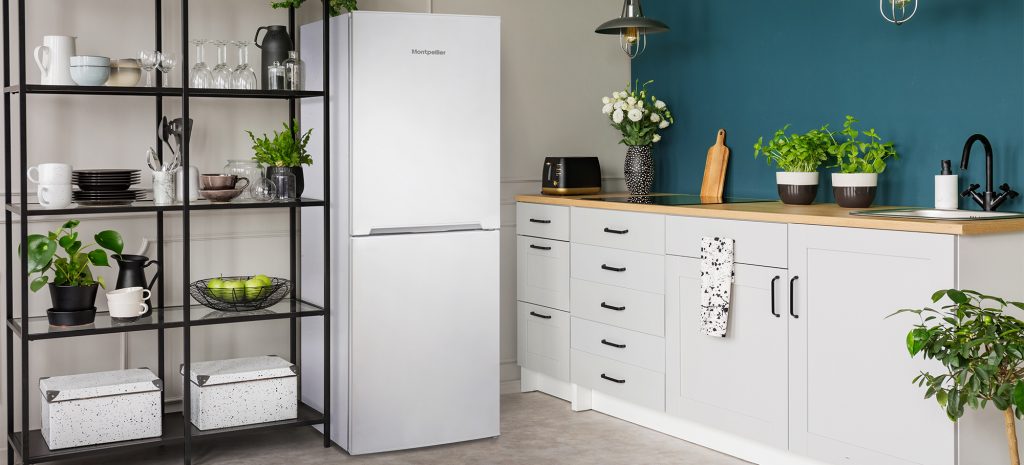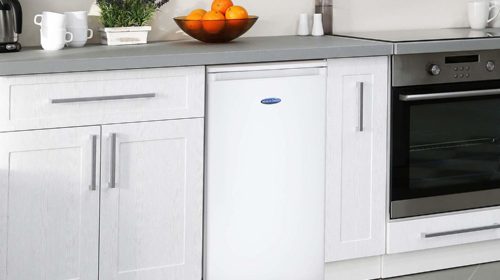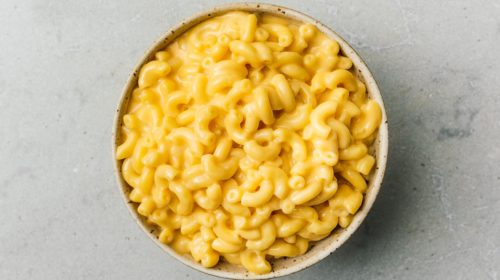Montpellier’s Guide To Refrigeration
Our Guide To Refrigeration Systems

What are the different refrigeration systems?
There are four main refrigeration systems: Static, Low frost, Frost Free and Total No Frost. Depending on which system a freezer or fridge freezer has can affect the longevity of the food kept inside it and the amount of space available for storage too.
Total No Frost is the newest kid on the block in refrigeration systems. Total No Frost works on the same principle as Frost Free, but it also circulates air around the fridge as well as the freezer.
The advantage of Total No Frost is twofold:
– there is less bacteria in the fridge as there is no moisture
– this also means that the cooling and freezing is more evenly distributed. Food therefore stays fresher for longer.
As there is no moisture inside the fridge (that occurs naturally in an auto defrost fridge), you won’t find water sitting on the lids of chilled foods like margarine tubs and on shelves for example. The cold air that is produced is a dry type of air which circulates around the refrigerator. This is beneficial as it limits the formation of mildew and odours that can occur on the inside of the fridge. It is important that food that is placed in the fridge is wrapped or covered to avoid it drying out.
In a Frost Free system, ice forms in the back of the freezer and is circulated around the freezer by a fan, giving even cooling across the whole compartment.
This allows for faster and more efficient freezing. The element is in the back of the freezer, which means you do not lose any volume. Under normal running conditions and with correct usage, the freezer will automatically defrost itself on a cycle meaning there will not be a build-up of ice, therefore eliminating the need to defrost.
To maintain these conditions, it is important that food is stacked evenly inside the freezer and that the door being left open is kept to a minimum.
Ice forms on the internal walls of the freezer. This means that there will be reduced frost inside the freezer but it will still need defrosting periodically.
Unlike static freezers, in a low frost freezer there are no metal elements. The amount of frost is less, hence the term ‘Low Frost’. In a fridge freezer, the fridge will still automatically defrost. To defrost a Low Frost, it is the same principle as a static freezer (see below). The shelves can also be removed for easier access to the internal walls.
Metal elements sit between each freezer compartment and cool down to reach the required freezing temperature.
This is the original cooling system and refers to the freezer only. If the unit is a fridge freezer, the fridge will automatically defrost (see Wet Wall Fridge below). This type of freezer needs to be manually defrosted. It is recommended that you defrost once ice builds up to over 5mm thick. Ice is caused by the freezing of the water vapour coming from the food and from the air that enters the appliance when the door is open.
The more the freezer is used (i.e. the door is opened), the quicker the build up of frost will be. Over time, this build up on the metal elements means there will be a loss of volume (and essentially space for your food), which is why it is important to defrost on a regular basis.
How to carry out a Manual Defrost for Static & Low Frost Freezers
- Take out all removable parts, such as drawers and flaps.
- Place an old towel at the bottom of the freezer and another on the floor in front of the freezer to catch the melted ice. You may need more towels depending on how much ice there is to defrost.
- Leave until all of the ice has melted, then wipe the inside of the freezer with a clean dry cloth.
- Replace all the parts and close the door.
To speed up the process, a bowl of warm water can be placed on the middle shelf of the freezer and then the door closed. If a plastic scraper is provided, this can be used to scrape excess ice. Do not ever use anything metal, pointed or sharp to defrost a freezer as it can cause damage.
*our Montpellier models that come with a scraper are: MAB145C/K/R, MAB341C/K/R, MAB346C/K/R, MS135W, MS145W, MS155W and MS165W
Winter Switch/ Ambient Switch
If the ambient temperature where the fridge freezer is located (for example, in an unheated garage, utility/kitchen) drops below 10°c, the fridge compartment may register cold enough so that the appliance will not run, this in turn will cause the freezer to switch off and defrost. During the winter, when temperatures are likely to be below 10°c, the ambient switch, when switched on, will allow the product to work in an ambient temperature down to 0°c. It is important to turn the switch off again when temperatures rise above 10°c.
Note that appliances with the Ambient Switch are not designed to be used in garages or outbuildings where the temperature will drop below 0°c, for temperatures below 0°c please see our models with Winer Safe -15°C below.
View our winter switch products here: MS135W, MS145W, MS155W, MS165W, MAB145C, MAB145R and MAB145K, MAB341C, MAB341R and MAB341K,
Winter Safe -15°c
Winter Safe -15°c is designed for products used in ambient temperatures of 10°c to -15°c (for example, in a garage or outbuilding in the colder winter months). It works by overriding the thermostat in a ‘super freeze’ function. Winter Safe -15°c will protect food in the freezer from defrosting, however, owing to the ambient temperature, this may well cause food in the fridge to freeze. When the temperature is within this range, it is recommended that the fridge is only used for items that will not perish or be affected by such low temperatures.
When the temperature rises above 10°c, it is best to turn the Winter Safe -15°c function off, as if left to run it can affect the lifespan of the compressor.
View our Winter Safe -15°c products here: MFF185DW and MFF185DX














